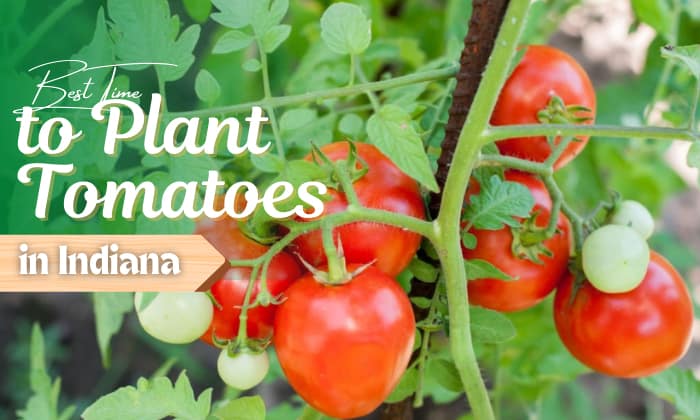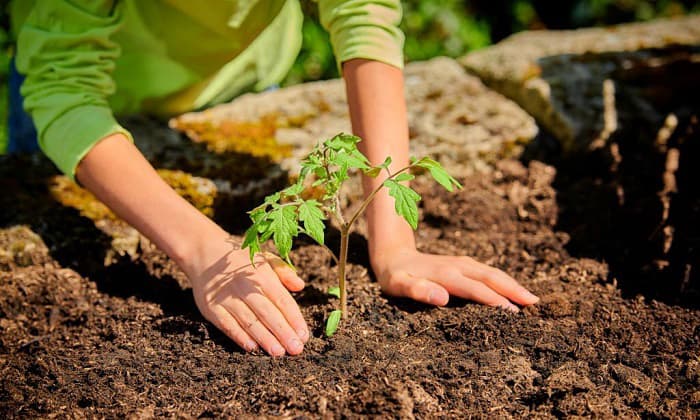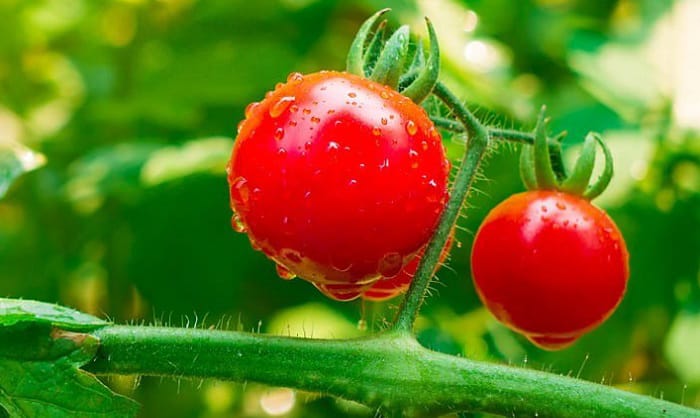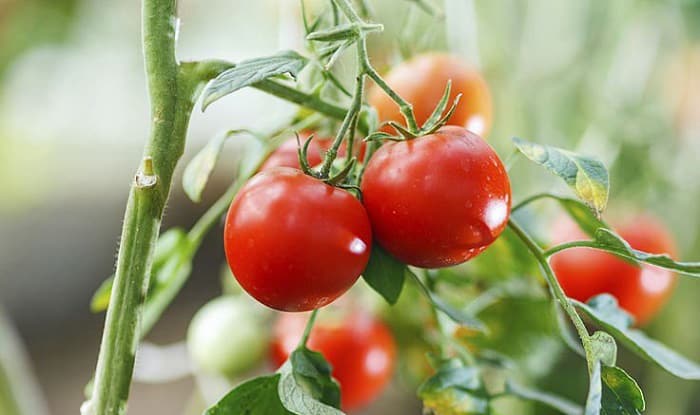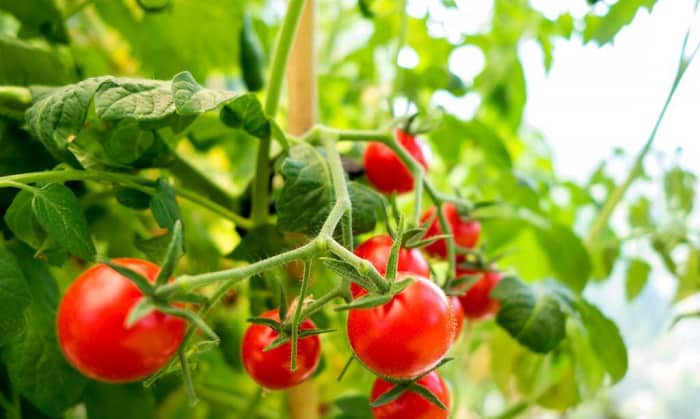Indiana ranks second in the US for the production of processed tomatoes, so it’s clear that the state’s climate favors these fruits.
That said, it’s important to cultivate tomatoes here at the right time, given the plant’s status as a warm-season crop and Indiana’s cold winters.
If you’re unsure when to plant tomatoes in Indiana, the planting season for them is approximately May 1 to August 15. Read further to know precisely what time of year you should grow these crops.
Table of Contents
When to Grow Tomatoes in Indiana
In what month should we plant tomatoes? To answer this question, follow these guidelines to pinpoint their growing time.
- First, tomatoes will die once their tissues become frozen, so you should seed them outside after the last frost or indoors six to eight weeks before then.
- For those who garden in the fall, remember to harvest tomatoes before the first frost. Make sure to give your cultivar enough time to fully mature before freezing weather arrives.
- Whatever you do, use thermometers before gardening. A good time to plant tomatoes is when ambient temperatures average at least 50℉ and soil temperatures reach 60
- Note that seedlings in pots need hardening off for ten days before being moved outside. Moreover, transplanting should happen under warm weather, when the crop is about two inches tall with more than two true leaves.
Now that you know the best time to grow tomatoes, here is the planting calendar Indiana has. We’ll use different cities in the state as examples:
| Last frost | Grow tomatoes indoors | Grow tomatoes outside | First frost | Latest planting time (with 90 days as the crop maturation period) | |
| Clarksville in southern Indiana | April 5 | February 8-22 | April 6 | November 5 | August 7 |
| Indianapolis in central Indiana | April 26 | March 1-15 | April 27 | October 16 | July 18 |
| Gary in northern Indiana | April 29 | March 4-18 | April 30 | October 22 | July 24 |
In our examples, mid-August is too late to plant tomatoes. However, this estimate can change if you use a crop variety that matures quicker or slower.
Best tomatoes to grow in Indiana
Tomatoes fall under two categories: indeterminate and determinate.
Indeterminate types are bigger and require support, while determinate ones are smaller and more suitable for growing in containers.
Another thing worth considering is their fruit production. While the former will allow for continuous harvests until temperatures are too cold, the latter sets fruits all at once.
So, keep in mind these characteristics as you pick your Indiana red tomato, as well as the following list of varieties.
- Determinate tomatoes – Silvery Fir Tree, Rocket, Siletz, Siberian, Celebrity
- Indeterminate tomatoes – Brandywine, Roma, Cherokee Purple, San Marzano, German Queen, Oaxaca, Early Girl, Beefsteak, Green Zebra, Sun Gold
As for sweet tomatoes Indiana growers can try, Peacevine, Sun Gold, and Big Rainbow are excellent choices.
Tips to Take Care of Tomatoes in Indiana
- Give tomatoes eight hours of sunshine per day and two inches of water per week to prevent blossom end rot.
- Use containers at least 18 inches wide, with plastic or glazed clay as the pot material.
- While transplanting, space determinate plants 5 feet apart and indeterminate ones 3 feet apart.
- Staking is necessary for indeterminate varieties and is beneficial for determinate types as well. Simply push the stakes into the ground and tie them to tomato stems every 8 to 10 inches.
- Aside from stakes, you may also use cages. Just place them over the plant and into the soil. The cages should be wide enough to surround the tomatoes and tall enough to keep the crops from keeling over. A height of 4-6 feet will do, with indeterminate types requiring taller cages.
- When growing tomatoes from seed, the soil should measure 50 to 95℉ for germination, with 65 to 85 degrees being the ideal range. Fruit set is optimal under 55 to 75 degrees, and it’s best to keep the temperature under 104 degrees so that the plant can produce tomatoes.
- In the event of unexpected spring frosts, cover your seedlings with a cloth. Moreover, mulch the ground with two inches of bark chips or straw. This practice will prevent erosion, increase soil temperature, and help prevent fruit cracking.
- Finally, test the soil before planting. The result will determine whether fertilizing is necessary and what nutrients to use.
In any case, avoid high-nitrogen formulas and fertilize twice in one season only (once before planting and another time during fruit formation).
FAQs
What is Indiana’s hardiness zone?
Indiana has hardiness zones 5b, 6a, and 6b. The northern part of the state mostly falls under zone 5b, while many of its southern locations are in zone 6a. Zone 6b covers small regions of Indiana like Posey and Gibson.
Is March too early to plant tomatoes in Indiana?
If you have outdoor planting in mind, then yes, March is too early. Indiana’s final frost ranges from April 11 to May 16, so farmers here must wait until April to grow tomatoes outside.
Indoor seeding, however, can begin a lot earlier, in February or March, if we follow the rule above.
To illustrate, the last frost date northern Indiana – or La Porte, to be specific, has – is April 25. Here, gardeners can seed tomatoes as early as February 28.
Conclusion
Tomatoes thrive under warm weather and are easy to grow, provided that you keep them away from nightshade crops like eggplants and potatoes or Amaryllidaceae such as garlic and onions.
It’s also essential not to put tomatoes in the same spot three years in a row, especially if said spot previously housed their cousins.
Other than these rules, you should adhere to the guideline above regarding when to plant tomatoes in Indiana. Trust me! Your crops will thank you for it.
Read next:
- Planting Pumpkins in Indiana – The best time, Affective factors,…
- When is the best time to plant pumpkins in Georgia,

Hi, I am William – Floridayards’ digital content creator. My job is to find answers to all your concerns with thorough research and our team’s expert advice. I will also bring you honest reviews on the best products and equipment for raising your beautiful garden. Please look forward to our work!


